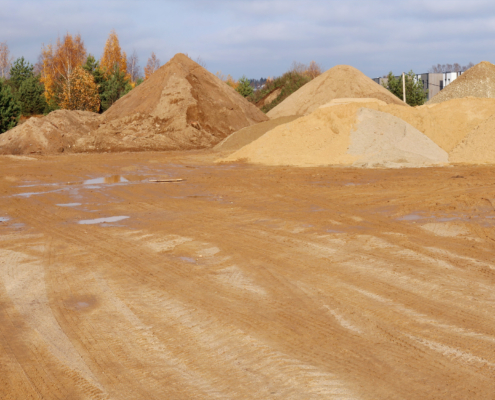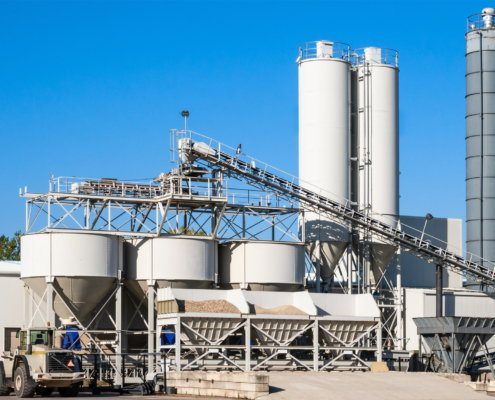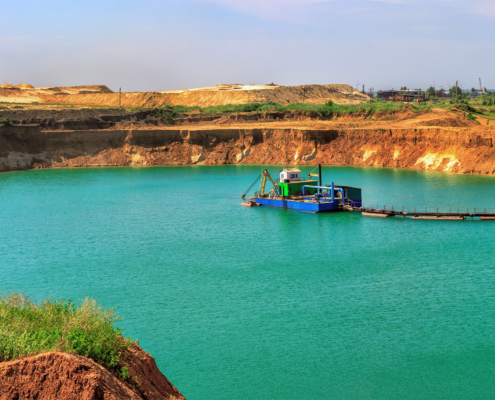 https://pontotocsandandstone.com/wp-content/uploads/2025/06/How-to-Choose-Between-Uncoated-and-Resin-Coated-Frac-Sand-for-Your-Operations.jpg
1250
2000
AbstraktMarketing
/wp-content/uploads/2021/08/Pontotoc-White-Logo.png
AbstraktMarketing2025-06-26 13:10:012025-07-03 16:14:28How to Choose Between Uncoated and Resin-Coated Frac Sand for Your Operations
https://pontotocsandandstone.com/wp-content/uploads/2025/06/How-to-Choose-Between-Uncoated-and-Resin-Coated-Frac-Sand-for-Your-Operations.jpg
1250
2000
AbstraktMarketing
/wp-content/uploads/2021/08/Pontotoc-White-Logo.png
AbstraktMarketing2025-06-26 13:10:012025-07-03 16:14:28How to Choose Between Uncoated and Resin-Coated Frac Sand for Your OperationsWhat Are Shingles Made of and Why Are They Important?
You likely don’t pay much attention to the shingles on your property until a storm comes through. Often, the only time they come to mind is when they’re damaged or on the ground. But have you ever wondered what shingles are made of and what they’re protecting?
Here’s everything you need to know about roof shingles and their components:
What Are Roof Shingles?
A roof shingle is a unit that covers and overlaps materials, combining to complete a roof. Shingles are positioned in rows across the roof, starting at the roofline and progressing toward the top. Shingles are made of asphalt, cedar, ceramic, slate, and solar glass materials.
Why Shingles Are Important
Roof shingles are strategically overlapped to deflect and position water runoff away from the underlayment, the roof membrane, and other building materials. They are also the first line of defense from external factors and all weather conditions, so they need to be durable. Shingles are also vital in regulating building temperatures by protecting insulation. Shingles packed with durable silica sand from a provider like Pontotoc reinforce your roof for years to come.
Types of Shingles
Installing the right shingles goes a long way in avoiding regular roof damage. There are many types of shingles, and it’s essential to understand the different material options impacting the performance of the shingles. Listed below are the different families of shingles:
- Aluminum Shingles
- Asphalt Shingles
- Three-Tab Shingles
- Dimensional Shingles
- Luxury Shingles
- Standing Seam Metal Shingles
- Wood Shingles
- Impact-Resistant Shingles
- Composition Shingles
- Copper Shingles
Although there are various types of shingles, this article will focus on asphalt shingles, the leading material in the industry.
From commercial buildings to residential homes, asphalt shingles are the most common selection for roofing projects. Check out how industrial sand is a vital part of the process for shingle production.
What Materials Do Asphalt Shingles Consist Of?
Roofing shingles are designed in a similar process, regardless of color, size, or style. They are all manufactured the same way using a list of vital raw materials. Certain elements, like asphalt coatings, dominate the industry. Let’s walk through how exactly roof shingles are made:
Asphalt is King
Asphalt is the most common material used for shingle installation across the country. The low upfront cost and quick installation time make asphalt the most demanded shingle material. Its performance is also desirable, lasting over 20 years with regular maintenance and inspection. More expensive asphalt coating material can last over 50 years.
In addition to cost efficiency and durability, the material itself is the most water-resistant ingredient found in shingles. The process begins by oxidizing the roofing asphalt, blowing air throughout the material to increase viscosity. Professionals have a precise oxidizing process; too little air blowing results in brittle shingles, while excess air blowing exposes shingles to softness. Minerals are mixed with asphalt to increase weather and water resistance. The asphalt coating is then applied to fiberglass components.
Asphalt Shingle Granules
A crucial aspect of roof shingles is the stone granule surfacing. Hard rock with specific properties is crushed and installed into granular shapes. Granules are utilized in various colors for a long-lasting appearance on the visible portion of the shingle.
Specific roofing systems feature algae and reflective granules. Algae granules reduce discoloration in shingles through blue-green algae. Reflective granules help shingles reflect sunlight, increasing a roof’s energy efficiency. Granules may be required by code in specific regions of the country.
Sealant
Thermally activated sealants are applied to shingles to bond together throughout the roof. There are layers of fiberglass material, and sealants are added to protect bonds and make sure the desired temperature range remains consistent.
Because the asphalt coating material is sticky, there must be a balance between restricting asphalt from sticking to rolls during the manufacturing stage. Sealants also provide support in this stage called back surfacing, which are applied to the bottoms of asphalt coatings.
Fiberglass
After shingles are constructed into a continuous web, materials are applied to boost the foundation. Fiberglass is made from glass material of specific diameter and length bound around to support resins and binders. This process begins at fiber mills to wound the material, which is then unwound and installed during the roof shingle manufacturing process.
Release Firm
Release firm is the final stage before shingles are installed on a roof. Release firm material is applied to shingles when stored in warehouses, ensuring components don’t stick together in hot temperatures.
How Are Roof Shingles Made?
Asphalt roofing shingle production typically follows this process:
- Quality requirements of asphalt assessed prior to shingle production
- Limestone powder is produced by milling limestone material
- Filled coating is created using a mixture of asphalt and limestone
- Fiberglass mats or other organic felt materials are rolled out
- Base sheet is created by applying a filled coating to the mats
- Granules are created by coated mining rocks to add color and other properties
- Granules and bonded to base sheets
- Sealants are added to asphalt sheets
- Asphalt sheets are cut down to make individual shingles
- Back surfacing is applied to shingles preventing any sticking together

Why Silica Sand Is the Key Ingredient for Asphalt Shingles
Providers that mine silica sand target crystalline SiO2. Silica sand is a product that has consistent chemical structure, hardness, and shape that can be used for various purposes. Especially great for shingle installation, silica is a solid material that regularly performs in all weather conditions. The sand material also has a high melting point, making it an excellent option for extreme conditions.
If you are exploring different sand materials, look no further than silica sand. These are just a few qualities headlining the most reinforced material installed in roof shingles:
- Withstands extreme heat and cold
- Reflects ultraviolet rays from the sun
- Resists high winds
- Deflects torrential rain
- Resists the growth of mold and algae
- Colored to satisfy customer requirements
The Best Material for Asphalt Shingle Production at Pontotoc Sand & Stone
Pontotoc Sand & Stone delivers a product with a thorough quality control process. Our revolutionary computerized sampling technology provides our customers with exact statistics for each shipment. Don’t wait any longer—reach out to order the best sand material for your roof shingles today.
Related Postings
 https://pontotocsandandstone.com/wp-content/uploads/2025/06/How-to-Choose-Between-Uncoated-and-Resin-Coated-Frac-Sand-for-Your-Operations.jpg
1250
2000
AbstraktMarketing
/wp-content/uploads/2021/08/Pontotoc-White-Logo.png
AbstraktMarketing2025-06-26 13:10:012025-07-03 16:14:28How to Choose Between Uncoated and Resin-Coated Frac Sand for Your Operations
https://pontotocsandandstone.com/wp-content/uploads/2025/06/How-to-Choose-Between-Uncoated-and-Resin-Coated-Frac-Sand-for-Your-Operations.jpg
1250
2000
AbstraktMarketing
/wp-content/uploads/2021/08/Pontotoc-White-Logo.png
AbstraktMarketing2025-06-26 13:10:012025-07-03 16:14:28How to Choose Between Uncoated and Resin-Coated Frac Sand for Your Operations https://pontotocsandandstone.com/wp-content/uploads/2025/06/How-Frac-Sand-Storage-Affects-the-Quality-and-Efficiency-of-Your-Fracing-Operations.jpg
1250
2000
AbstraktMarketing
/wp-content/uploads/2021/08/Pontotoc-White-Logo.png
AbstraktMarketing2025-06-26 12:59:152025-07-03 16:14:28How Frac Sand Storage Affects the Quality and Efficiency of Your Fracing Operations
https://pontotocsandandstone.com/wp-content/uploads/2025/06/How-Frac-Sand-Storage-Affects-the-Quality-and-Efficiency-of-Your-Fracing-Operations.jpg
1250
2000
AbstraktMarketing
/wp-content/uploads/2021/08/Pontotoc-White-Logo.png
AbstraktMarketing2025-06-26 12:59:152025-07-03 16:14:28How Frac Sand Storage Affects the Quality and Efficiency of Your Fracing Operations https://pontotocsandandstone.com/wp-content/uploads/2025/05/Reasons-Why-Locally-Sourced-Frac-Sand-Saves-You-Time-and-Money.jpg
1250
2000
AbstraktMarketing
/wp-content/uploads/2021/08/Pontotoc-White-Logo.png
AbstraktMarketing2025-05-29 18:31:122025-07-03 16:14:29Reasons Why Locally-Sourced Frac Sand Saves You Money and Time
https://pontotocsandandstone.com/wp-content/uploads/2025/05/Reasons-Why-Locally-Sourced-Frac-Sand-Saves-You-Time-and-Money.jpg
1250
2000
AbstraktMarketing
/wp-content/uploads/2021/08/Pontotoc-White-Logo.png
AbstraktMarketing2025-05-29 18:31:122025-07-03 16:14:29Reasons Why Locally-Sourced Frac Sand Saves You Money and Time